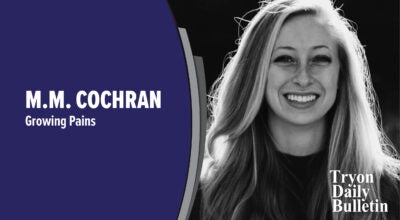Diet & Exercise: A super antioxidant that greatly improves one’s health
Published 8:00 am Friday, April 20, 2018
Vitamin E was discovered in 1922, isolated in 1935, then synthesized in 1938.
It’s first application was identified to fertilize eggs in rats, so it was given the name “tocopherol”, from Greek, meaning to bear or carry.
Vitamin E refers to a group of compounds that include tocopherols and tocotrienols. Y-tocopherol found in soybean oil, corn oil, margarine and dressings, is the most popular form of vitamin E found in the U.S., but A-tocopherol is the most biologically active form of this vitamin.
Vitamin E is one of several nutrients known as “antioxidants.” The word antioxidant means anti(against) oxidant (oxidation), and refers to substances that prevent cell damage caused by oxidation.
As an antioxidant, vitamin E naturally slows the aging process. This also helps prevent common illnesses and disorders.
Here are other benefits derived from vitamin E.
• Vitamin E helps people with Alzheimer’s disease, by contributing an anti-inflammatory effect. This may slow down memory loss and functional degeneration. Studies also show when taken with vitamin C, vitamin E can decrease the risk of developing dementia.
• Lowered cancer risk. Vitamin E contains isomers that have been connected to cancer protection. Isomer, from the Greek isos (equal), meros (part), are compounds that have the same molecular formula, but different chemical structures. Vitamin E has also been used to lesson harmful effects of medical cancer treatments.
• Vitamin E is crucial during pregnancy for growth and development, especially during the 1,000-day window from conception. It’s recommended pregnant women, nursing mothers and children up to the age of 2 take a natural food-based vitamin E supplement.
• Vitamin E regulates hormones, by balancing the endocrine and nervous systems. Keeping these systems healthy can help maintain healthy weight and keep a regular menstrual cycle, reduce allergies, anxiety and fatigue.
• Repairs damaged skin. Within skin, vitamin E strengthens capillary (body’s smallest blood vessels) walls, improves moisture and elasticity.
• Erases stretch marks. When I was a guest of the Pam Stone radio show, we had a gentleman call in who said his wife rubbed vitamin E oil on her skin, every day of her pregnancy, and once the baby was delivered, she had not a single stretch mark.
• Strengthens nails and hair. Vitamin E is a super antioxidant that moisturizes and conditions brittle nails, and repairs damaged hair while protecting tissue in the scalp.
• Vitamin E protects against wrinkles, too. This nutrient stimulates collagen (the substance that holds cells together), while keeping skin more flexible and elastic.
Vitamin E is measured in international units. The recommended daily allowances are birth to 6 months: 6 IU, infants 7-12 months: 7.5 IU, children 1-3 years: 9 IU, children 4-8 years: 10.4 IU, children 9-13 years: 16.4 IU, teens 14-18 years: 22.4 IU, adults: 22.4 IU, pregnant teens and women: 22.4 IU, and breastfeeding teens and women: 28.4 IU. Many adults take relatively high doses of vitamin E (400 to 800 IU a day) with no harmful effects.
Foods rich in vitamin E include wheat germ oil, sunflower seeds, tomatoes, kiwi fruit, broccoli, peanuts, spinach, almonds, Hazelnut oil, mamey sapote (fruit of a tree native to Cuba and Central America) and almond oil.
David Crocker, of Landrum, has been a nutritionist and master personal trainer for 30 years.





